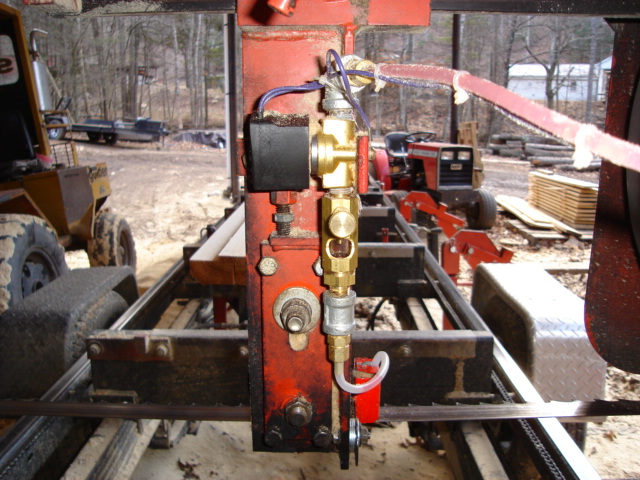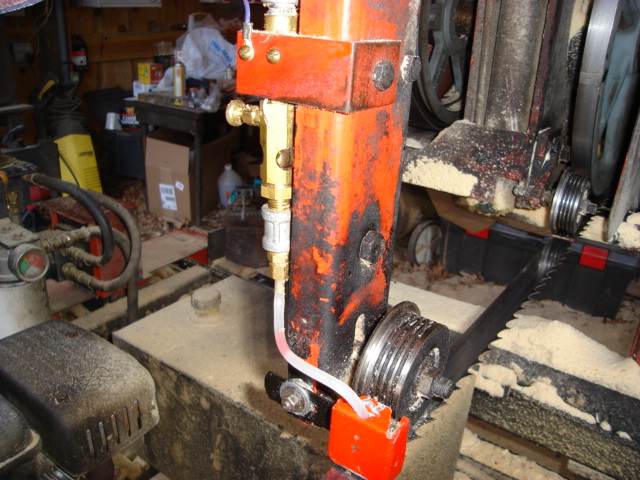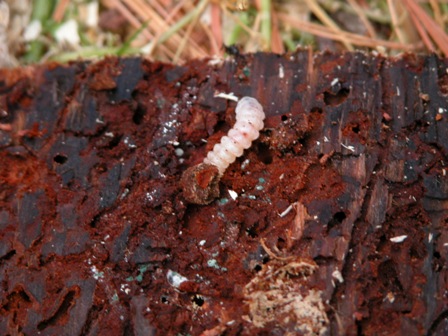Blade Lube for Cutting Pine
Sawmillers suggest Pine-Sol, dishwasher detergent, or diesel fuel. November 16, 2011
Question
I would like some info about cutting white pine logs. I have some logs that were cut recently but won't go to the saw for about eight weeks. The logs range from 22" to 12" X 10ft. What is the best way to keep the blade and rollers clean of sap? Iíve heard of putting different soaps in the water but not sure what is used. I will be cutting on a LT15 saw.
Forum Responses
(Sawing and Drying Forum)
From contributor R:
We cut eastern white pine and poplar. We use Pinesol at about one cup to five gallons water. It seems to do the trick. It also gives it a nice smell too!
From contributor G:
My recipe for everything is two oz. of Cascade liquid per gallon of water. Very slick and doesn't foam. When it's below freezing I also add a gallon of -34 degree windshield washer fluid.
From contributor W:
I saw 1000's bf of white pine a year. I used Pinesol and water for a few years and always had multiple problems at times - rust, freezing, belt slippage, etc. I used Pam or an equivalent product to spray on rails or any area that the sap would accumulate and it helped greatly.
I redesigned my lubrication system and changed to off road diesel fuel (or No.2 fuel oil). On a heavy day of sawing I will use between 1/2 and 1 gallon of blade lube. The mist from the oil coats the areas that usually get sap build up. This works super for me. Also another note is that when using soap and water I noticed the drive wheel would slip inside the blade at times and leave black residue in the cut from the belt slippage. I changed my mill over to steel wheels a couple years ago and I have never had an indication of the drive wheel slipping. I also used the windshield washer fluid along with the soap and water during freezing weather and drained the system after sawing to keep it from freezing.

Click here for higher quality, full size image

Click here for higher quality, full size image
From the original questioner:
Thanks for the all the info. I don't cut when it is cold so don't need to worry about things freezing up. I will try the Pinesol and see how that works. I only have eight pine logs to cut then back to hardwood so I hope the sap won't be too bad. Any special way to stack the pine boards or stack the same as hardwood?
From contributor T:
I use summer diesel fuel as a lube, it is more waxy than the winter diesel. I use a really slow drip if I am having gum build up. If there is no build up I use nothing. Your blades will stay shiny and won't rust. Some folks are critical about using diesel fuel. You use such a small amount that I have never had a problem. It works for me.
I like to cut my pine in the colder weather and at least before spring heat comes. Pine cut then will have better color with no fungus stain and sticker stain. You can air dry under cover, or get it in the kiln green. This also applies to hard maple, or most light colored woods.
From contributor W:
I stack pine just like I do hard wood. I also scrape the excess sawdust off the wood because it will mold or turn black. I would suggest when using diesel fuel for blade lube on pine to use a wiper system as opposed to a drip system. I tried both and ended up with the system in my pictures. Also, leaving pine logs stacked in warm weather you will get what we call Black Horn Pine Borers under the bark and they will tunnel 1/4 inch holes all through your log. I purposely keep some of these logs for customers that want a rustic look. You can hear them cutting in the log and will see their chips on the outside eventually.
So I do not leave my pine logs laying around too long with bark on them. I have a community of House Wrens nesting around my mill in the summer waiting for me to saw lumber so they can get the worms and bugs from the slabs under the mill and stacked wood. I know the bird thing is off topic but it's different and I enjoy watching them. I have to put plastic bags in some areas of my mill when not in use to keep them from building nest in it.

Click here for higher quality, full size image


